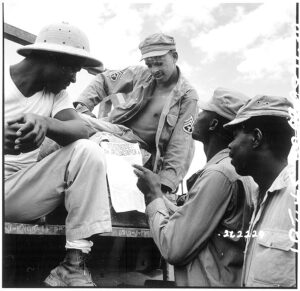
Nepal Earthquake
Last month, Nepal, a country in Southeast Asia located between India and China, experienced a devastating earthquake. In geological terms, rock located approximately nine miles below the surface of the earth shifted, causing a shock wave to ripple throughout the region. Scientists measure the magnitude of an earthquake using instruments called seismometers and assign it a numeric value on the 10-point-value Richter scale. The earthquake in Nepal measured a 7.8. Aftershocks, or smaller quakes, are typical in the days that follow an earthquake. This region has experienced nearly 100, including one that triggered an avalanche on Mount Everest, the tallest mountain in the world.
The United Nations say that nearly 8 million people have been affected by the disaster. The death count continues to rise, now topping 7,500. Nearly 14,500 have been reportedly injured. Rescue efforts have been difficult because buildings continue to collapse and major roadways are blocked. The small airport at Kathmandu is struggling to properly distribute aid arriving from all over the world. The United States has sent in military assistance to reach those in remote areas.
Dig Deeper Nepal is one of the poorest countries in Asia and ill-equipped to rebuild on its own. Do some research into potential long-term efforts, listing specific challenges to the reconstruction of this country.
70th Anniversary of V.E. Day

The beginning of World War II is marked by Germany’s invasion of Poland in 1939. The end is marked by Germany’s surrender to the Allies (made up of 27 countries including the United States, France, and the United Kingdom). At the end of the war, people all across Europe celebrated in the streets. In London, the lights at St. Paul’s Cathedral were turned on in the shape of a V for Victory. In the years that followed, May 8 became known as V.E. Day (which stands for Victory in Europe). It is a national bank holiday in many countries.
Today marks the 70th anniversary of V.E. Day. In the United Kingdom, three days of celebrations have been planned, including concerts, parades, services, and gatherings honoring those who served. The British Broadcasting Corporation (BBC) has produced a documentary series featuring the stories of those who lived through the war. In the United States, vintage World War II aircraft will fly in formation over the nation’s capital and other events will mark the anniversary.
Dig Deeper Find out if anyone in your city or state is commemorating V.E. Day with an event. If not, see if you can find a first-person account in your local paper or do some research on the topic at your school library. Write a few paragraphs describing what you uncover.
Chilean Volcano
A 6,500-foot volcano in Calbuco, Chile erupted on April 22. It had been dormant for more than 40 years and reactivated with very little warning. There have been three blasts that have blown more than 200 million tons of ash into the sky, raining nearly 20 inches of it down upon the region. The lingering ash cloud darkened the skies for more than 1,000 miles. President Michele Bachelet of Chile declared a state of emergency, which will allow the country to receive aid. More than 6,000 people from surrounding areas were evacuated and Calbuco has been placed on alert, preparing for more blasts.
Some of the biggest concerns in the aftermath are the effects of the environment on the people. Inhaling the volcanic dust that continues to linger in the air is a serious health concern, and contaminated water supplies are another. An estimated 20 million fish have died and much of the wildlife have migrated away from the area, which will impact the hunting and fishing industries. On a positive note, there is evidence to suggest that the materials contained in the volcano act like fertilizer and that the vegetation will grow back and wildlife will return once things calm down.
Dig Deeper Follow news about the Chilean volcano on Twitter at #calbuco. Note at least three entries that capture your interest and share with your classmates.
The Fall of Saigon: 40 Years Later
The Vietnam War (technically considered a “conflict” because it was never declared an official war by Congress) reached a new level of military escalation in 1964 with the Gulf of Tonkin Resolution. U.S. military involvement ended with the fall of the city of Saigon to North Vietnamese forces on April 30, 1975. This year marks the 40th anniversary of the city’s capture and the evacuation of U.S. troops. America’s involvement in this part of the world began in the 1950s.
When Vietnam gained its independence from French colonization, many feared it was vulnerable to communist influence. President Eisenhower believed in a “containment” policy when it came to dealing with the threat of communist aggression. The United States acted as an advisor to the South Vietnamese government and began increasing its military presence in the area. Over the course of four separate presidential administrations, 54,000 Americans and an estimated 3 million Vietnamese were killed. When President Nixon took office, he pushed for the“Vietnamization” policy of handing the war over to South Vietnamese troops and decreasing U.S. troop levels. When American troops left, communist North Vietnam seized control of South Vietnam.
There are many opportunities to commemorate the 40th anniversary of the occasion and honor those who served. Many of them are in the form of engaging documentaries focused on various aspects of the conflict and its aftermath.
